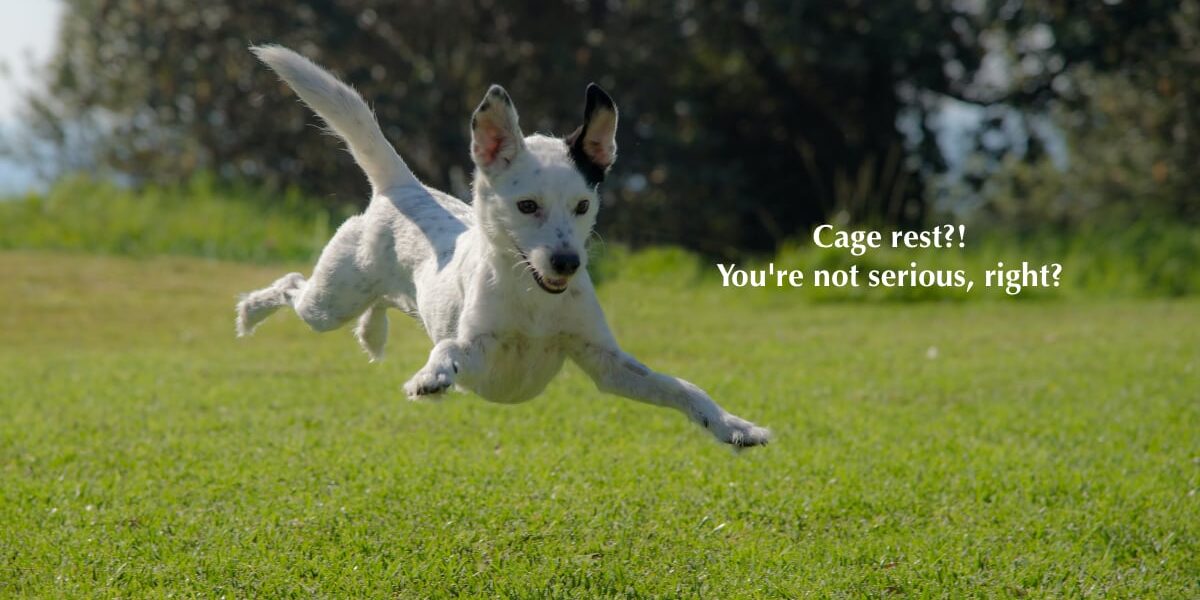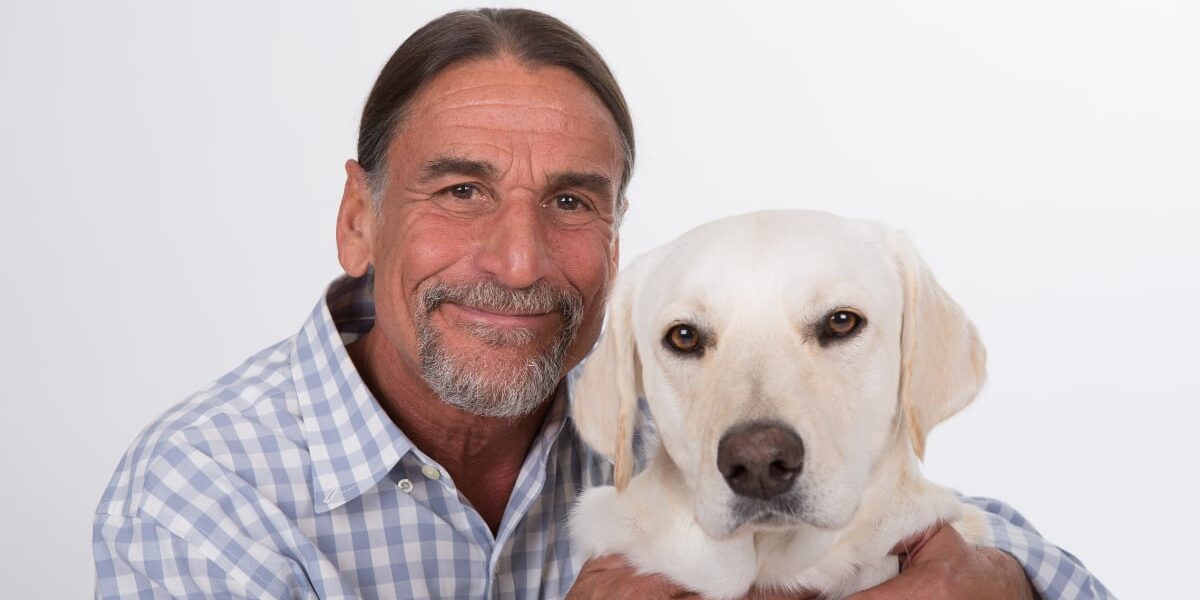Senior Dog, Senior Cat Care
Got senior-itis? No, not the “itch to get out” that senior high school students experience, I’m speaking of the senior dog or cat who’s getting gray around the chops, sleeping more, jumping less.
Surprisingly, the “senior” category has dropped lower and lower in conventional medicine, so now many dogs and cats are considered senior by age seven!
Juliette de Bairacli Levy, the famous herbalist crone who died a few years back at age 96, raised her Afghan hounds in the 30’s using in ways that would only later be termed “holistic.” Using natural rearing methods that included raw diets, herbs, and regularly fasting, these dogs often lived well into their twenties!
Now, you know the bigger breeds today are often considered quite old if they make it past ten years. What’s going on here? And more importantly, how can you keep your dog or cat with you for the longest, most vital life possible?
Low Protein Caribou, Mice?
One of the central marketing scams of the last twenty years or so would have you believe that you need a different bag of food for a pup or adult or senior dog.
I’d urge you to look at the wild ancestors and cousins, (as I like to do for reference) and ask yourself:
Do wolf pups or lynx kits somehow get brought higher protein caribou or mice?
And conversely, are the aged members of pack or pride somehow finding low protein versions of the prey they thrive on?
Crazy thought, right? Prey is prey, no matter your age. And the genes of the wild cousins are almost identical to our modern day pets, right? I submit that this “senior dog food” idea is pure marketing, and one to avoid.
Conventional veterinary medicine often gets this way wrong in cats, thinking low protein is somehow healthier in the aged. This is not even true in most cats with kidney disease, as we’ve learned from those who’ve been allowed to eat balanced raw, mostly meat diets. (Hint: they blossomed!)
How to feed your senior dog or cat
1. Use species appropriate food.
That means prey-like food, especially important for the “obligate carnivore,” that little lynx who lives in your house. Use your logical thought process here:
What’s prey made of? Can I mock it up in the food dish?
I usually paint in broad brush strokes here. Prey is roughly:
- 60-70% muscle and bone by mass
- Probably about 20% organs, and maybe
- 10% vegetation in the stomach and intestines.
Then, factor in that, at least in the big prey like caribou or reindeer, the wolf shakes that huge mass of stomach contents all over the ground before eating, and you’ll see that broccoli shouldn’t make up half of your pet food, right? Great for you, and some is fine for your dog or cat, but in very low proportion to the whole diet.
You can make this at home and not be far off, changing ingredients periodically, rotating say a month on chicken, a month on beef, a month on turkey, and back again. Lots of books out there to guide you and lots of great frozen prepared choices, some delivered right to your door on dry ice!
2. Less food as activity declines (prevent obesity)
This is also true across species lines, and should be common sense (though, as my friend John says, “Common sense is often not very common”). Obesity is a health impediment. Don’t go there.
A broad brush stroke that works for most, regardless of age:
–> Feed that amount that’s quickly gobbled up (5 minutes or less for dogs, 20 minutes or less for cats) and your animal’s weight is where it should be.
Leaving food at each meal, and weight is normal? Feed that much less till it’s finished.
Good measures of weight:
Dogs: a normal, indented or at least parallel waist, no bulges
Cats: no fat pad on the lower belly, no bloated belly
Both dogs and cats: a spine whose “bumps” you can feel with moderate pressure. Too skinny makes a very prominent bumpy spine, too fat makes it hard to find those bumps.
How often to feed:
- under 30 lbs, twice daily
- over 30 lbs, once daily
3. Kindle the “Low Digestive Fire”
It’s not unusual for the older pets to have trouble digesting food, and that can be helped by adding enzymes to each serving. This is especially true in the case of kibble fed pets, as kibble is cooked, by definition. Enzymes are amazing catalysts that help extract nutrition locked up in food.
The addition of enzymes can mean such efficient digestion that you can cut back further on portion sizes. See #2.
I like to see probiotics, the friendly bacteria, be a regular addition to all animals, and senior pets are no exception. You can often find enzymes and probiotics together in one supplement. Here’s one I like.
Other goodies
You may want to add a good source of essential fatty acids (EFA’s) of the omega-3 class. They are anti-inflammatory by nature, helpful for immune balance and good for coats. I like fish oils for the carnivores, flax is fine for the humans. Two good brands I’ve trusted over the years are Carlson’s and Standard Process. I take their Tuna Omega 3 and share it with my patients!
Senior Dog/Cat Joint Help
In all animals, seniors included, it’s important to provide regular exercise opportunities. Sometimes joint aches get in the way of enjoying that.
I had a dog patient years ago who was quite lame, in multiple joints as I recall. We tried the usual supplements with glucosamine and tried remedies, but weren’t doing very well controlling this discomfort.
Her savvy owner took things into her own hands and starting feeding knuckle bones from poultry, full of lots of cartilage, and the old dog never looked back, getting significantly more limber and staying that way as long as she fed them! Chicken feet, a cheap source, are loaded with joint helping compounds, albeit a bit gross.
A dog supplement that’s showing promise, if chicken feet give you cold feet, is Wag, a natural, tasty joint supplement based on egg membrane, boswellia, curcumen, and chelated minerals. They’ll send you a free two week trial sample and guarantee results, so click here to give them a try.
One for cats that I’ve seen work really well is Nu-Cat from Vetri-Science. Largely food based, which I like, based on perna, the green lipped mussel.
Stop Vaccinations!
Have an already vaccinated dog or cat? Got a few rounds in his youth, but at over four months of age? Then there’s no need to keep repeating that and there’s harm in doing so.
Are you running titers? Fine, just don’t make this mistake in your senior animal:
“Her titer dropped off, so I re-vaccinated her.”
Big and risky mistake. Read what titers fail to measure on this page.
Keep The Cancer Cells in Check
You and me and every animal we can name is thought to have cancer cells arising on a regular basis. We are not all dropping over of cancer though, and here’s why:
Our immune systems “see” these cancer cells as foreign, and kill them.
As we age, our immune system, like the rest of us, tends to run a bit less efficiently. That’s probably why cancer is the #1 cause of canine death overall, according to a very large study published in 2011, looking at 74,000 cases of canine death spanning the twenty years prior to 2005.
Immune support that’s got research behind it makes logical sense in the senior guys. You can see what I think is the best immune support for all species by clicking this link.
Seniors, Like Everybody: No Poisons!
Let’s face it, there’s a chance to poison your pet in the name of prevention at every step. It becomes even more important in the oldsters to avoid this, as detoxification is more challenging to the older set.
The Big No-No’s:
Flea Control. You already know this, but isn’t it tempting to believe the ads that make it look so easy and safe to just puts some drops on her shoulders? No way, babe.
Heartworm Prevention. If you haven’t read about the dangers of the monthly tablets or the safe way to effectively prevent this parasite, please, don’t wait another day: buy this book! I wrote it from years of veterinary experience living where heartworm lives, keeping my patients free of the parasite and free of the drugs’ potential damage.
Pure water helps. Pure food, of course. And take care of those teeth, naturally.
What else old buddy? You’ve given me so much love and companionship for so many years. You want a little scritch on your neck? Right behind the ears? C’mere, I got something for you.
Have any favorite things you’ve found to keep your senior dog or cat in top shape? Tell us in the comments. We all benefit from what you’ve learned!





>Cats: no fat pad on the lower belly, no bloated belly
Hmm… I don’t think my cat is severely overweight or anything but I think he definitely has a fat pad on his belly. I guess it’s time to make some changes. I already only feed him twice a day so I guess maybe I just need to cut down his portions.
I’d look first to the carb content your little carnivores are eating, MA. If on kibble, changing to raw will bring him back to a happy place. http://vitalanimal.com/feed-for-vitality/
Hi, Dr Will!
Re Less Food as activity declines….sometimes you have to feed less because hormones are declining in older dogs, even when activity doesn’t decline…my 10-yr-old intact Whippet’s hormones are declining, translating to somewhat lower metabolism, so she’s getting less food, still walking 30 min/day, and coping with her boisterous grandchildren.
Yes, enzymes are helping, for Zoreia and her 6-yr old son…her 6-yr-old daughter doesn’t seem to need them yet.
Re probiotics….they are really delicate little fellows, who can be easily destroyed by stomach acid, so I usually use an Enteric Coated type (like one of the Jarrow brand), and feed at night, just before bed, empty stomach, when the dogs don’t have an abundance of stomach acid going. Seems to work better for my Whippet Pack.
Re EFA’s…big, but an effective way to train young dogs to pill, also! For my puppies, I usually swap off, one day a good EFA, the next a high DHA, for brain development. Within a few days of starting this swap routine, I noticed greater Focus ability, during Training Sessions. One of my little Whippets (a Sighthound!) is showing a Talented Nose, and wants to be a Search Dog, like her maternal grandma.
I used to feed a Glucosamine/Chondroitin supplement to my Elders, but then I found a couple of additional ingredients that made it work better…MSM and Hyaluronic Acid. The HA helps rebuild synovial fluid, while the MSM gives the Glucosamine/Chondroitin combo something to BIND TO, while making more cartilege. When I switched her to Gluc/Chond/MSM/HA combination, my now 10-yr-old began jumping into/out of/onto/off of and over everything, she felt so good again! I never thought of feeding Chicken Feet. I don’t get too many of those, since my chickens are mainly a Laying Flock…but all my Whippets do get a fresh egg, every day, which I now feed Raw!
thank you for this informative and useful post – i’m so happy to read this one from the suggestion box!
one of my favorite things to help my 14-year-old senior gal with mobility is stylish “footwear,” or no-slip socks. after she had surgery, her mobility was compromised and these socks helped her feel more confident moving about the house – especially on our slick hardwood floors. they can be found readily online, but i bought her “power paws,” complete with heart design (aww!) from the folks at http://woodrowwear.com. the rep was very helpful with sizing questions.
i also think it’s helpful to know that age doesn’t automatically mean that your senior *must* slow down. my gal became a canine good citizen at age 12 and a therapy dog at age 13! she now volunteers once a week at the senior center.
I agree, Poppy: we don’t need to assume anything, but can let the animal show us her limits. Very cool you’re dog is doing so well and being of service. If you have any tips on being a service dog and not getting vaccines every year, please share that as well.
And the booties sound neat: got some grippy stuff on the bottoms?
yes – they’re like human hospital socks!
my pup is a therapy dog (as opposed to a service dog) and while the organization we work with does require vaccinations, the date of her last vaccine was sufficient. i hadn’t vaccinated her for years and years, but going down the therapy dog road did “force” me an “either/or” situation. either i gave her a vaccine i didn’t want to, or i didn’t go down a road of volunteerism.
looks like i’m not alone. i read with interest this helpful article about this very topic: “rolled-up welcome mat?” by denise faim from the may 2013 of whole dog journal: http://www.whole-dog-journal.com/issues/16_5/features/rolled-up-welcome-mat_20745-1.html.
it’s a conundrum for us following the vital animal path, for sure.
Dogs used in all kinds of service are often required to get way more vaccinations than immmunology would dictate they need. Conscious owners, knowing the damaging effects of further vaccination, often pull their dogs from the programs, rather than subject them to further health challenges.
It’s an area that’s likely going to be very slow to change. Why? The CYA in large organizations rules.
A real shame that great dogs are lost to service careers due to fears ruling over sound information to the contrary. I recently had a very sad case of a brilliant drug detector dog, a big Lab with a huge love for his work, falling apart with epilepsy and crippling arthritis after years of medical, and especially vaccination, abuse. Everyone who knows him is sad, but no one sees that his illness was not happenstance: it was caused by too much “prevention.”
Great article, thank you so much. Question, please. I looked at the Nutri Cat product you recommended and it appears to be a full multi supplement. I am currently feeding my 12 year old Persian the Transfer Factor ( along with a raw / prey diet). Do you recommend using both products with a older kitty at the same time?
I feel so good about using the Transfer Factor products… before meeting Dr. F, I used a variety of other products with no real success. I have very healthy kids 🙂
Thanks 🙂
Lori
Hi Lori,
The nutritional base of Transfer Factor was developed by a vet nutritionist, and made to compliment any other diet or supplement without over dosing anything.
Glad you’re liking it!
I have seen first hand everything that Dr. Falconer talks about work for my 6yr old great dane. She is in far better health today at 6 than than she was at 3yrs old, just by making the changes he talks about. She went from spiraling downhill with numerous cancerous tumors from over vaccination, heartworm meds and kibble diet to cancer free and running with 2 vizlas’ at the dog park. Not bad for an “old” lady (who by the way loves her sardine popsicles on a hot day in Seattle)
This posting is very helpful. When I was feeding kibble to my dog, I fell victim to the “puppy” and “senior” formula marketing. Silly me! The raw food has made such a difference to my big white guy. He used to scratch a lot and he’d shed so much, I had to vacuum every other day. It was insanity.
On raw food (thanks Dr. Falconer), he no longer itches, so he doesn’t scratch and he no longer sheds. How could that be? White German Shepherds are supposed to be HUGE shedders. Well, I guess they must be allergic to kibble cuz raw food rocks.
I like the idea you stated about giving them one type of meat for a month. I ran out of my pork, so the dogs are getting mostly beef now and some fresh frozen venison a hunter friend gifted us. I found out I can order a “dirt” pig from the meat locker, which they buy from the farmer down the road. Our beef comes from our next door farmer neighbor’s grass fed cattle.
I’d like to hear more about vaccinations and if it’s possible not to give any to our dogs. Wolves don’t get vaccinated and I don’t think they get the diseases domestic dogs get. Why should we be doing even one, except if it’s a law.
Thanks so much. I look forward to your postings!
Hi, Elle!
How right you are, re wolves and vaccinations….I seem to recall reading about one study (can’t recall details, but results IMPRESSED me) in which wild wolves were captured, vaccinated for rabies, and tagged with radio collars. All the vaccinated wolves, and their family Packs, died of rabies. I think this happened back between 1930 and 1950, but I’m not sure.
I’d love to see that article, Doria, please keep me in mind if it pops up in your world again.
Good advice on biologically appropriate food. I found that more than 10% organ meat caused my dog to have cannon butt. Also factory-farmed poultry can be problematic for dogs. You probably don’t recall, but my dog’s skin turned black and smelly. This condition resolved when I stopped feeding chicken. He had no problem with turkey, so other fowl as it works. Rabbit. Lamb. Mutton. Goat. Beef or bison heart. Pork shoulder or butt. These were staples as I could get them. There’s a learning curve, but the condition of our animals always tell us which way to go (or when to move in another direction.) Stool too soft; feed more bone. Stool too hard; feed more muscle meat. To feed vegetable matter or not is a matter of debate. I pulverized vegetables and mixed with ground turkey or sardines. I stopped sweating this when I moved over to “prey model” diet. Good stinky tripe, however, is quite the delicacy. Austin Raw Feeders and other co-op buying groups are wonderful resources for dog and cat owners who want to transition a senior pet to raw.